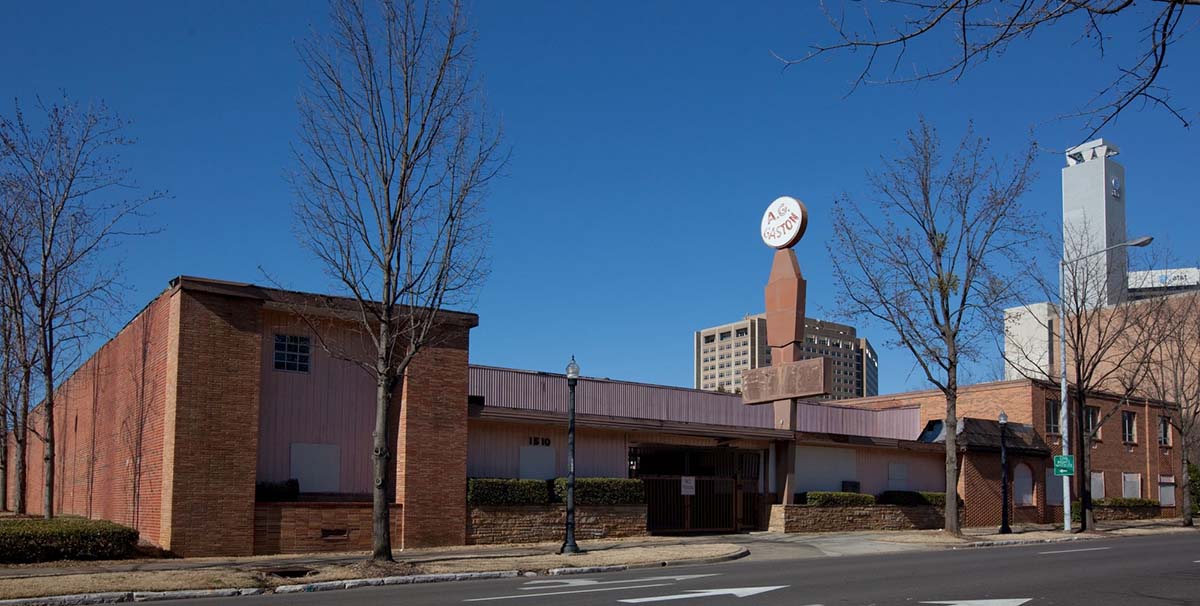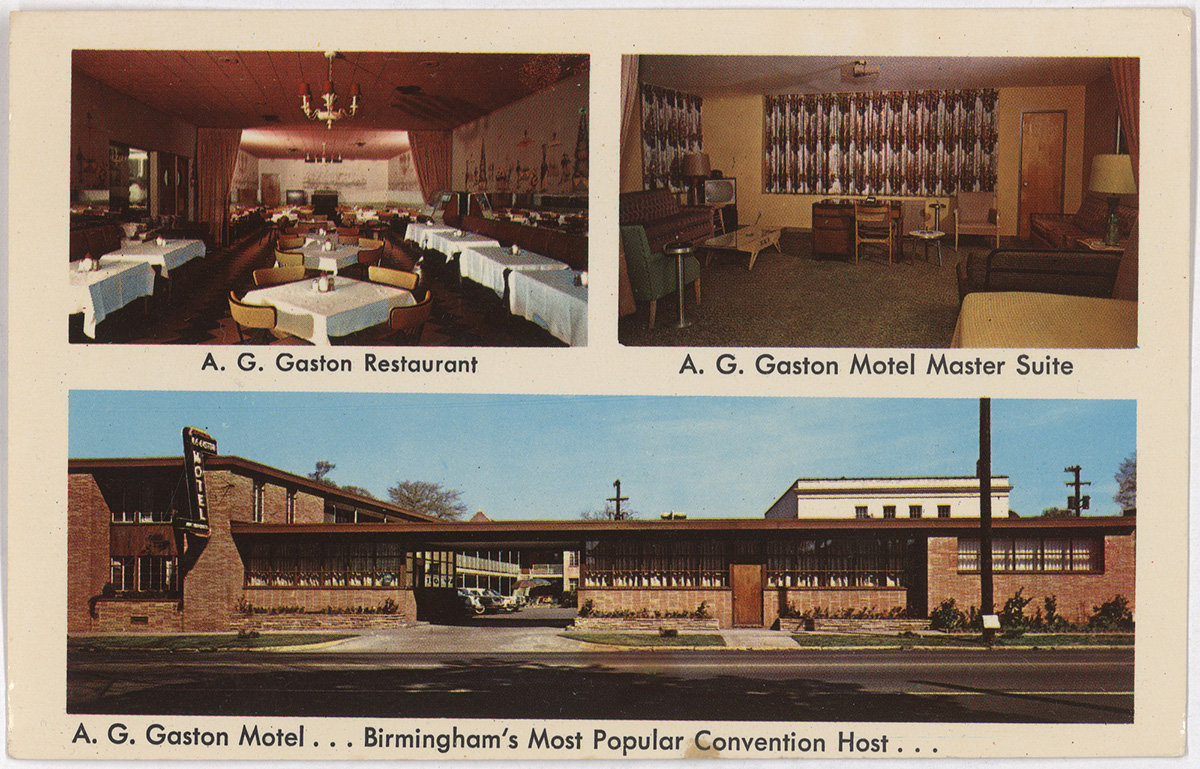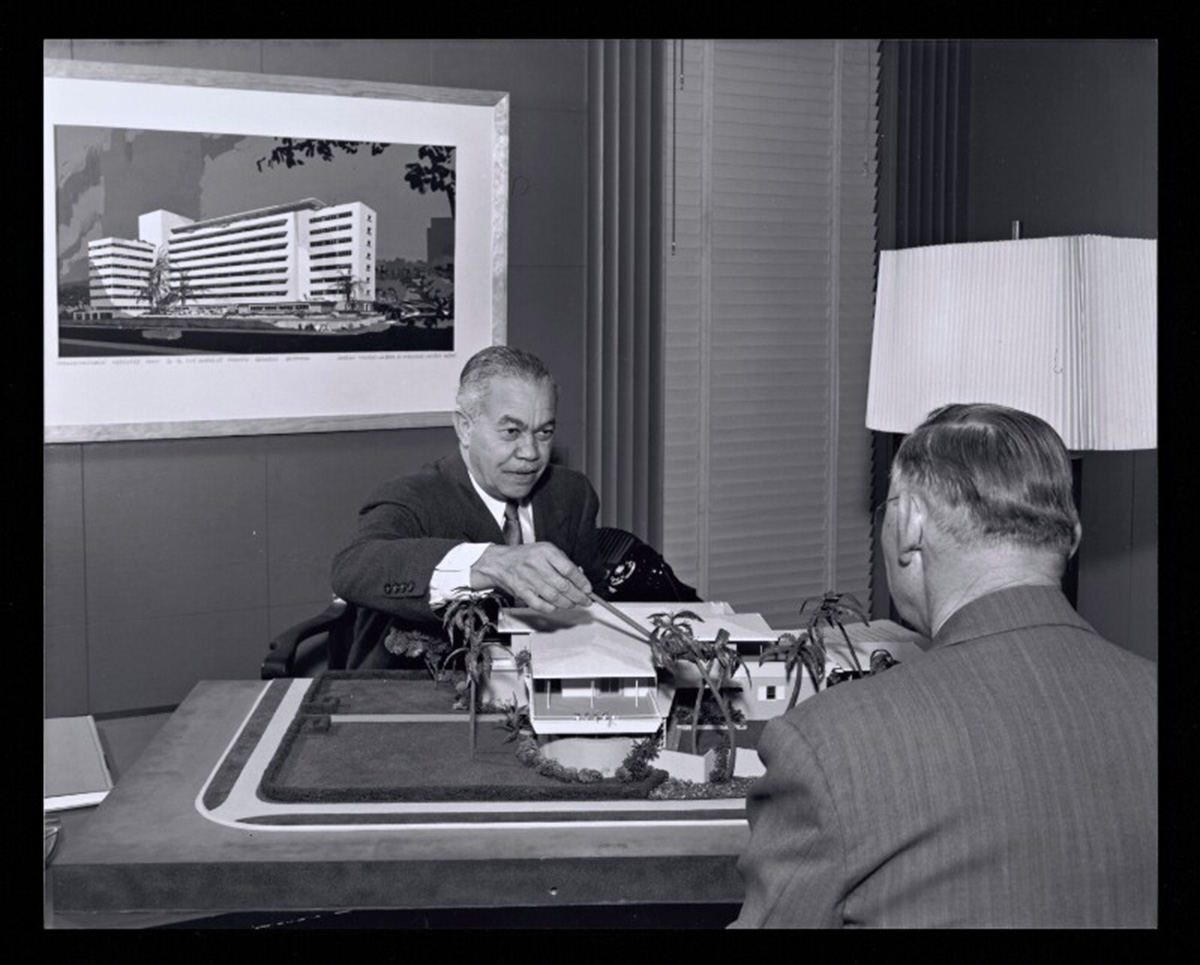Submitted by WA Contents
$3.1 million grant program will preserve historic modern architecture designed by Black architects
United States Architecture News - Sep 22, 2022 - 10:29 1997 views

The Getty Foundation and the National Trust for Historic Preservation’s African American Cultural Heritage Action Fund have announced a new $3.1 million grant program, titled Conserving Black Modernism.
A new grant program will preserve historic modern architecture designed by Black architects and designers.
The two-year program, which is a larger part of the Action Fund’s $80 million national grant program, will support the documentation of 16 overlooked buildings in the US, while also including necessary preservation planning, training and storytelling tools and resources to ensure a long term sustainment.

"A.G. Gaston Motel," Birmingham, Alabama, Carol M. Highsmith, 2010. The George F. Landegger Collection of Alabama Photographs in Carol M. Highsmith's America Project, Library of Congress, Prints & Photographs Division
As stated by the Getty Foundation, the Action Fund’s national grant program "has supported 160 historic sites representing Black history at a total investment of $12.4 million so far".
According to the Getty, none of the US-based grant programs included the work of Black architects and designers, and it states that with this new grant program, it will fill this gap and support and strengthen the works of Black architects and designers.
Conserving Black Modernism emerges as an extension of the Getty Foundation’s Keeping It Modern initiative. The initiative awarded "77 grants totaling $11.8 million between 2014 and 2020 that supported conservation planning and research for modern buildings and sites from around the world."

Postcard view of the A. G. Gaston Motel in the 1950s. Image: CC BY-NC 2.0
"For more than a century, the achievements of African American architects and designers have been overlooked and undervalued," stated in a press by the Getty Foundation.
"Their contributions helped shape the modern architecture movement in the US, fueling innovation and experimentation, while also pushing the limits on how individuals live within their built environments."
"While a handful of Black architects and designers gained notoriety for their innovative and modern designs, most worked in the shadow of larger offices under white architects of record, and thus remain relatively unknown."

Church of Religious Science, Los Angeles, 1957, Paul R. Williams (architect); photography 1965, Julius Shulman. Gelatin silver print. © J. Paul Getty Trust. Getty Research Institute, Los Angeles (2004.R.10)
"We’ve heard the increasing calls in recent years"
Grant applications will be opened in November this year and will be managed by the National Trust. The Getty Foundation plans to announce the first round of grantees in summer 2023.
"We’ve heard the increasing calls in recent years to rethink and expand the story of modern architecture in the United States and do a better job of recognizing Black architects and designers," said Joan Weinstein, director of the Getty Foundation.
"Conserving Black Modernism offers a strategic opportunity to meet this moment in partnership with the National Trust and build on nearly five years of success with their existing Action Fund," Weinstein added.

Postcard of the A. G. Gaston Motel in Birmingham, Alabama, circa 1960-1969, from the Book of letters sent to Arthur Shores, prominent attorney and civil rights leader in Birmingham, Alabama (Vol. 2). Alabama Department of Archives and History
"Long-term funding and conservation management planning are main challenges"
The grant program has two main objectives, "long-term funding and conservation management planning" which are still ongoing challenges for the protection of Black modernist buildings, according to the Getty. The program will mainly address these two issues.
"These grants provide support for emerging study and advocacy to preserve the undervalued works of Black architects across this nation who worked within and beyond the aesthetic and economic constraints of their time," said Milton Curry, professor of architecture at the University of Southern California.
"The complex story of Modernism cannot be fully revealed without new research on its impacts in and on the Black communities that it has touched," Curry added.
It will expand "the expertise of those in the architectural field"
Other advantages of the program are aimed to expand "the expertise of those in the architectural field". Through the process, the grant program is intended to support "convenings of project participants, consultants, and preservationists that foster peer-to-peer learning and professional connections."
"The program will also aim to create lasting partnerships between the Action Fund, Getty, Black heritage networks, grantees, and national stakeholders preserving sites of Black-designed modern architecture," stated the Getty Foundation.

Azurest South, Amaza Lee Meredith, 1939, Virginia State University, Ettrick, Virginia. Photo: Brian D. Goldstein, 2021, CC BY-NC 4.0
"This program will go a long way to expand our thinking around modernism"
"Black modernism has always been out there. It’s like Lonnie Bunch [Secretary of the Smithsonian Institution] is fond of saying: oftentimes Black history is hiding in plain sight—there’s a way in but it just isn’t legible," said Mabel O. Wilson, professor of architecture, planning, and preservation and director of the Institute for Research in African American Studies at Columbia University.
"It’s just who was writing the histories, who was defining modernism that determined who was included or excluded."
"This program will go a long way to expand our thinking around modernism and shed light on Black architects—like Robert Taylor, Amaza Lee Meredith, Vertner Tandy—whose work shaped modern architecture in the United States but have largely been left out of the history books," Wilson added.

Portrait of Paul R. Williams, 1952, Julius Shulman. Gelatin silver print. Getty Research Institute, 2004.R.10. © J. Paul Getty Trust
The latest effort of the initiative is the launch of the Getty Conservation Institute’s Los Angeles African American Historic Places Project and the Getty Research Institute’s joint acquisition (with the USC Center for Architecture + City Design) of the archive of Paul R. Williams, one of the best-known 20th-century Black architects in the United States.
Top image: Azurest South, Amaza Lee Meredith, 1939, Virginia State University, Ettrick, Virginia.. Photo: Brian D. Goldstein, 2021, CC BY-NC 4.0.
> via The Getty Foundation
